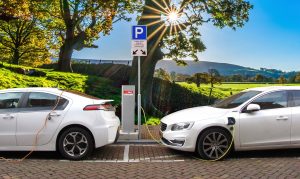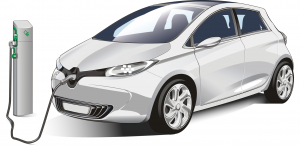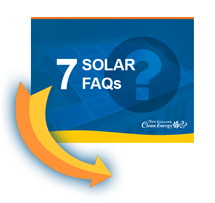Solar power generation is growing in popularity since the presidential election. And President Biden has indicated that he will be tightening U.S. emission standards to meet global environmental goals. In response, several major automobile companies have moved forward their manufacturing deadlines for electric vehicles (EVs). So today we will explore the role of solar electricity in fueling the electric vehicle industry.
What does the transition to electric vehicles and solar power generation mean for consumers?
The future of electric vehicles looks promising with improving technology, the growing environmental movement, and increased government spending on green/clean infrastructure. Manufacturers like GM, Ford, and Volkswagen are jumping on board by bringing forward their EV transition deadlines. With this shifted focus, people are beginning to realize just how fantastic electric vehicles can be.
For starters, EVs help the U.S. cut down on transportation pollution, which accounted for 28% of national greenhouse gas emissions in 2018. Additionally, EVs are cheaper to maintain than gas-powered vehicles. Yes, they can get pretty pricey based on brand, battery capacity, and range but in time, one’s gas savings will more than offset the upfront cost of an EV. Electric engines also mean no more oil changes. Plus, brakes don’t wear as quickly in EVs so you’ll save on brake pads, too.
However, there is one hurdle that must be addressed: infrastructure.
Necessary infrastructure: electric vehicle charging stations
 Most EV owners charge their cars in their garages at night. But what about those who don’t have access to a garage (i.e. apartment or condo dwellers)? Or what if you run out of power on the road? The answer: charging stations must be made readily available in public places. A shift from gas stations to EV stations will be costly. But it is necessary in order to ensure a smooth transition from gas to electric. Luckily, President Biden’s new infrastructure plan addresses this issue, and includes funding for the construction of 500,000 charging stations nationwide. Without a doubt, these stations will be worth the investment, considering the long-term benefits of clean transportation.
Most EV owners charge their cars in their garages at night. But what about those who don’t have access to a garage (i.e. apartment or condo dwellers)? Or what if you run out of power on the road? The answer: charging stations must be made readily available in public places. A shift from gas stations to EV stations will be costly. But it is necessary in order to ensure a smooth transition from gas to electric. Luckily, President Biden’s new infrastructure plan addresses this issue, and includes funding for the construction of 500,000 charging stations nationwide. Without a doubt, these stations will be worth the investment, considering the long-term benefits of clean transportation.
According to the EPA, a typical passenger car emits 4.6 metric tons of carbon dioxide per year. In contrast, an electric vehicle generates no tailpipe emissions. Plug-in hybrid electric vehicles, or PHEVs, are somewhere in the middle because they still run partly on gasoline.
Keep it green: solar power generation for charging stations.
Want to go one step further? If you want to make your EV lifestyle as eco-friendly as possible, you can change how you make electricity by using solar power generation.
Electricity generated from the sun is infinite and free. If you own an electric car or you’re thinking of purchasing one down the road (pun intended), you should think about installing solar. We’re not just saying that because we’re in the business. We’re saying it because solar power generation can not only provide clean and cheap power for your electric vehicle, but also your entire home.
So, even though EV’s might be more expensive than gas-powered vehicles, there are massive savings to be had on the other side. After purchasing an electric vehicle, you’ll never pay for gas again. And what’s more? If you invest in solar too, you’ll not only be saving on gas, but also on utility bills. Two green investments = two forms of savings. Not to mention that you’ll be saving the environment, too. So make that three forms of savings!
In summary, you can cut your transportation (and residential, if you so choose) costs, emissions, and stressors by using solar power generation.
Alright, I’m convinced. What now?
If you’d like more information, we invite you to call us at 877-886-8867. Can’t wait a moment longer to get a free estimate? Head on over to our free solar estimate tool which uses satellite technology to provide you with an accurate estimate in minutes!
If you liked this article, you may also like:



 Download our 7 FAQs
Download our 7 FAQs

